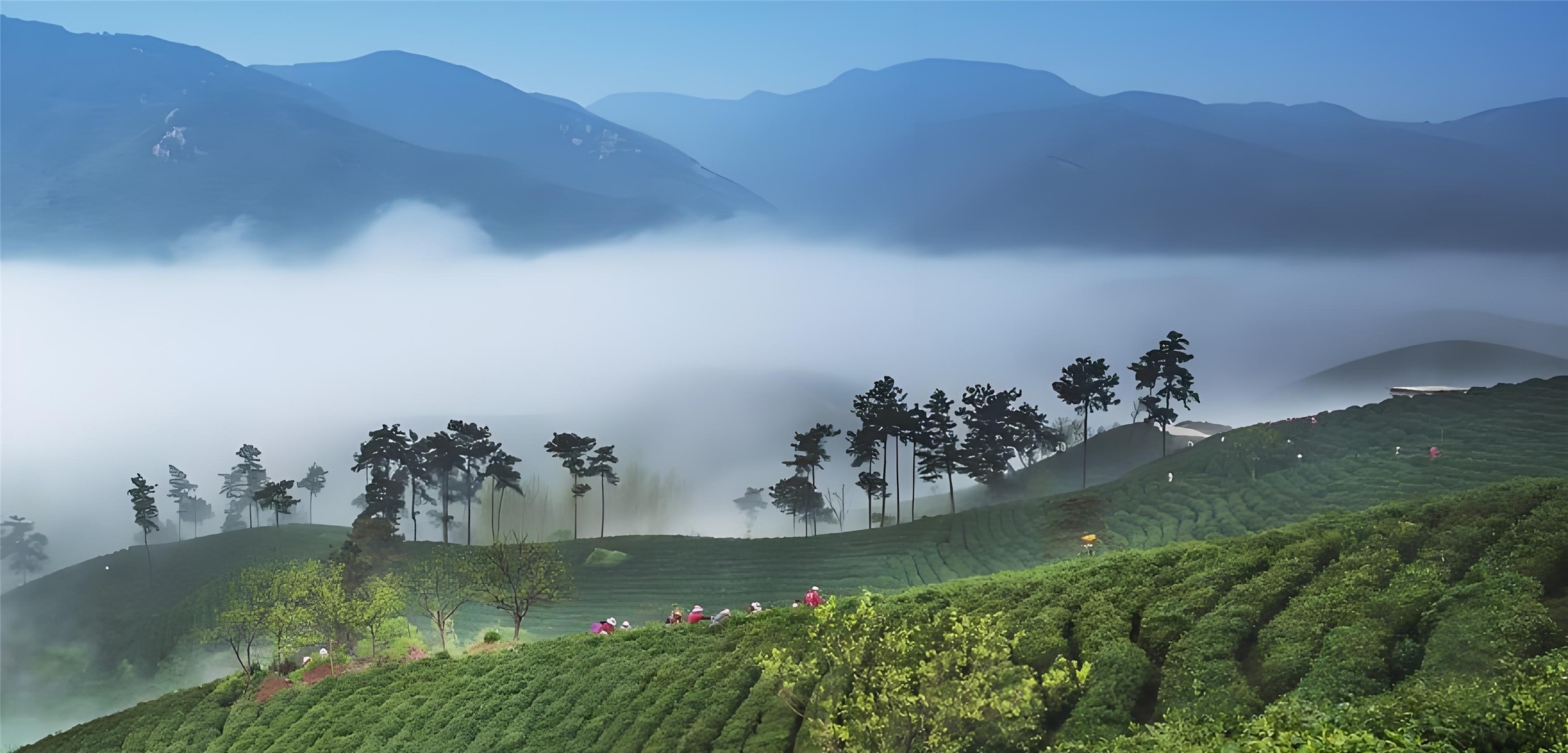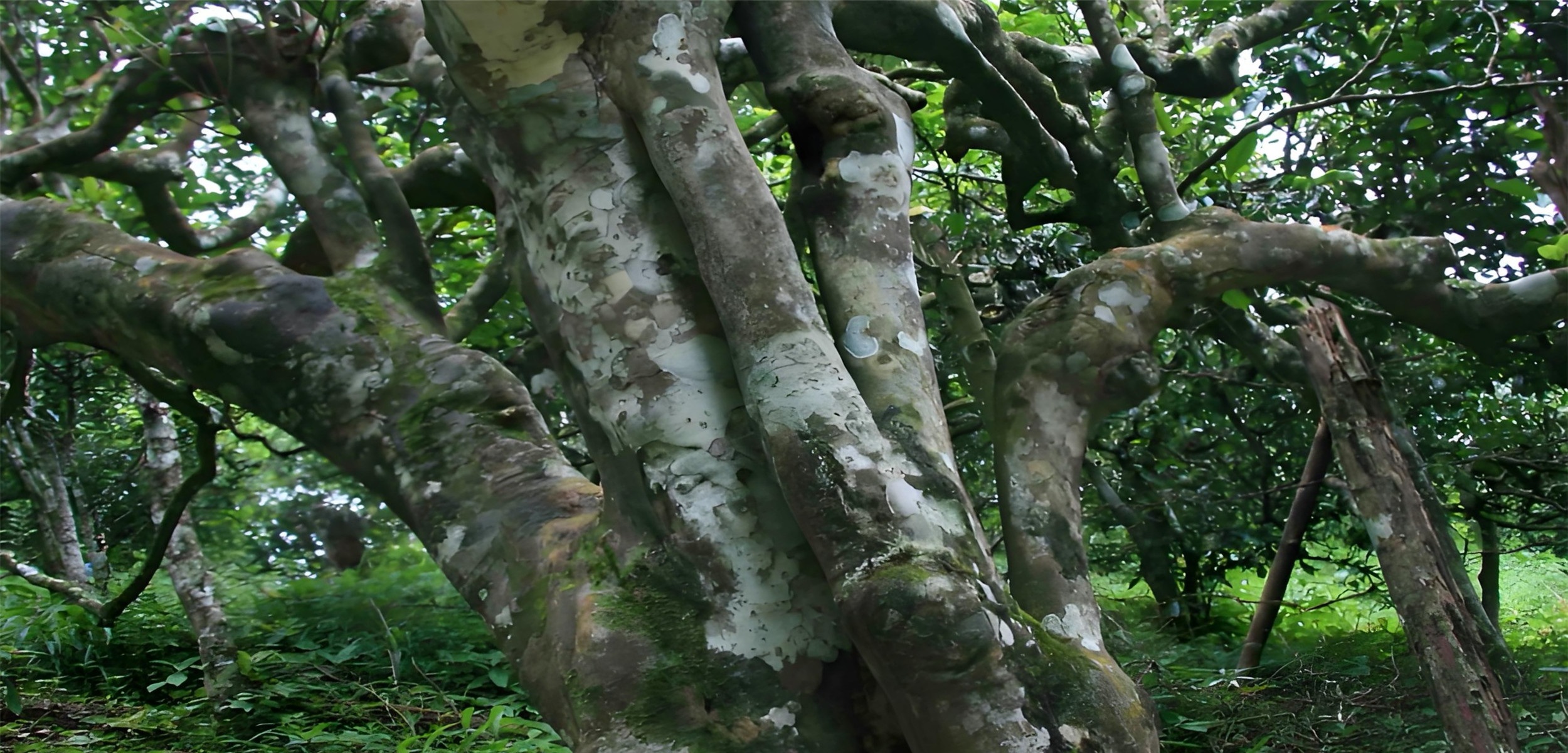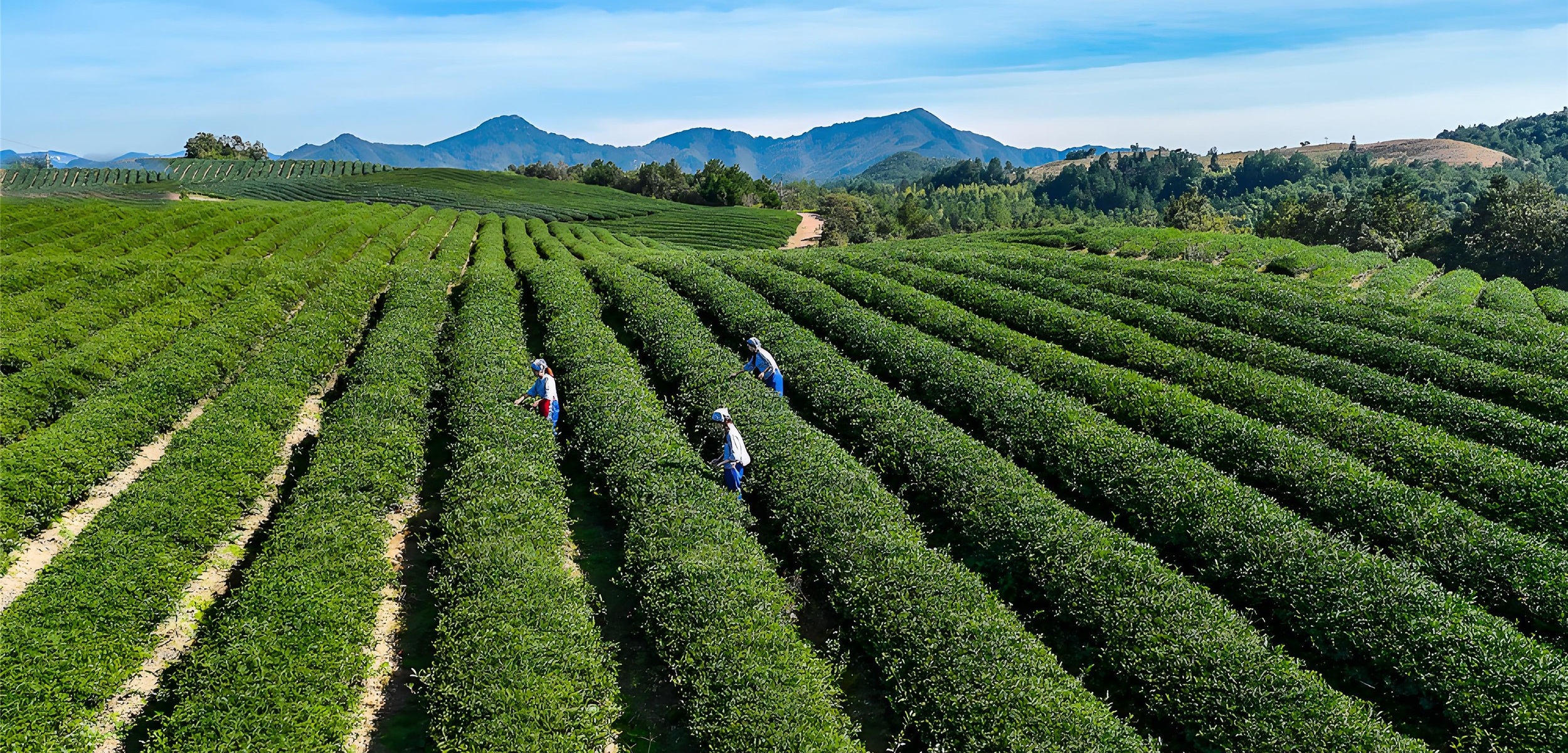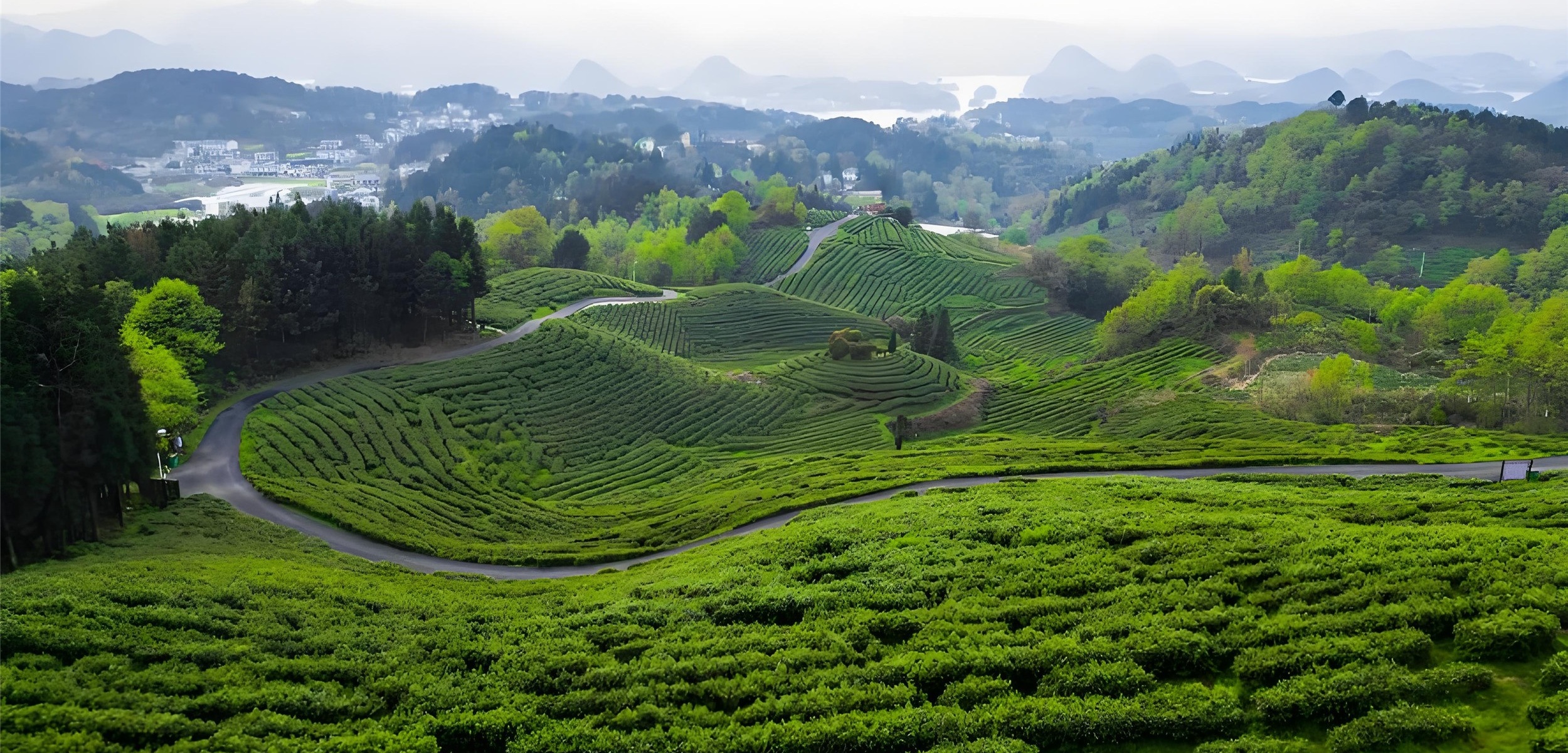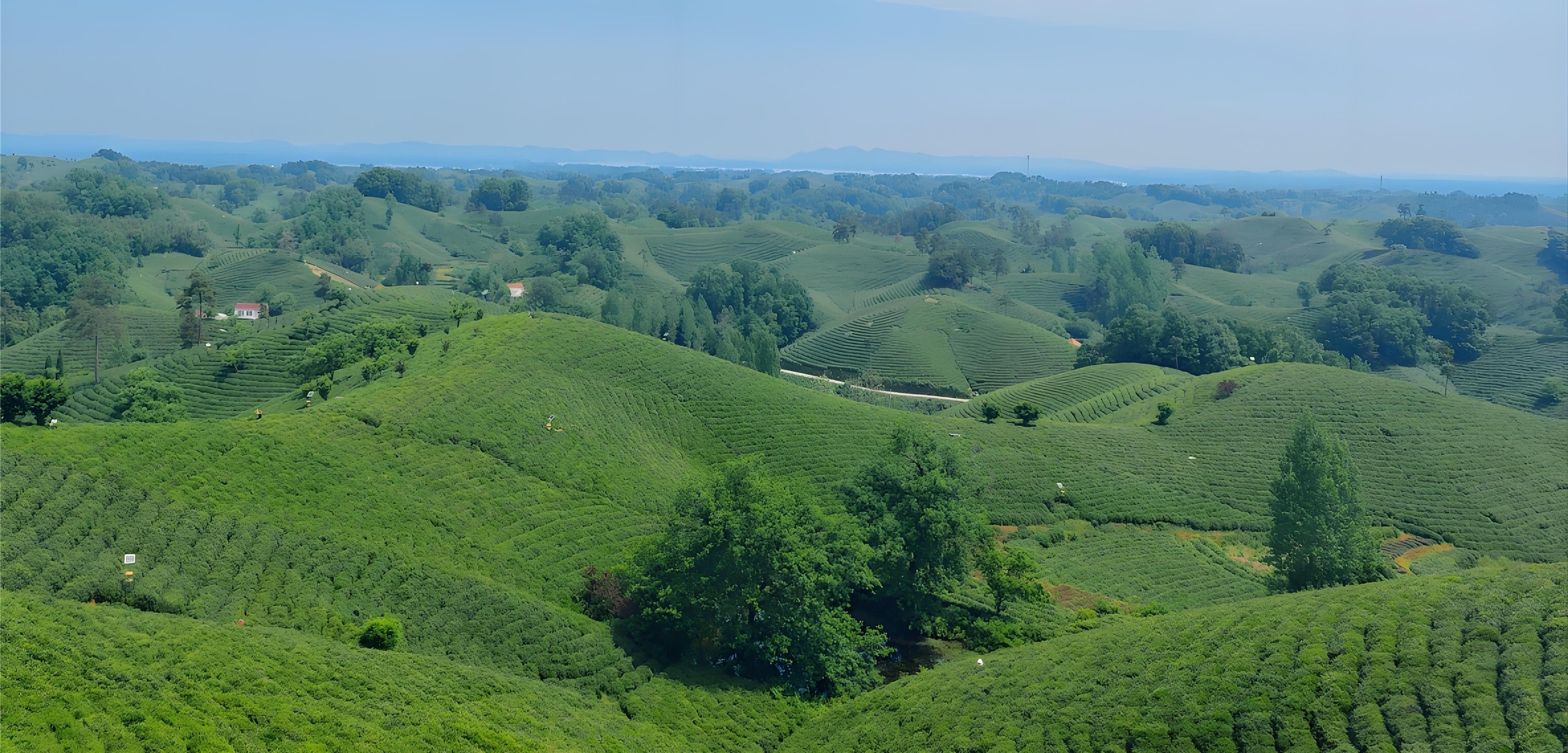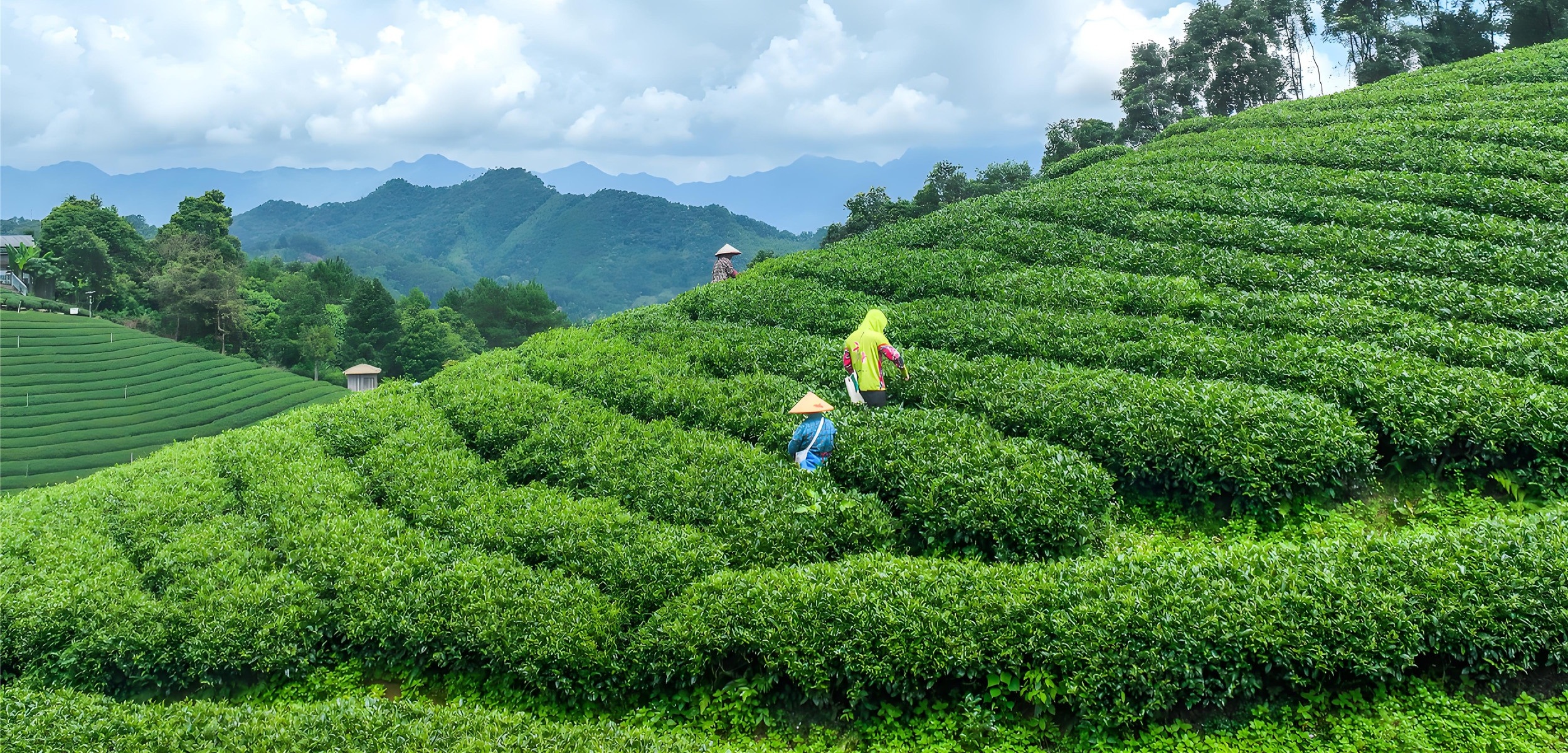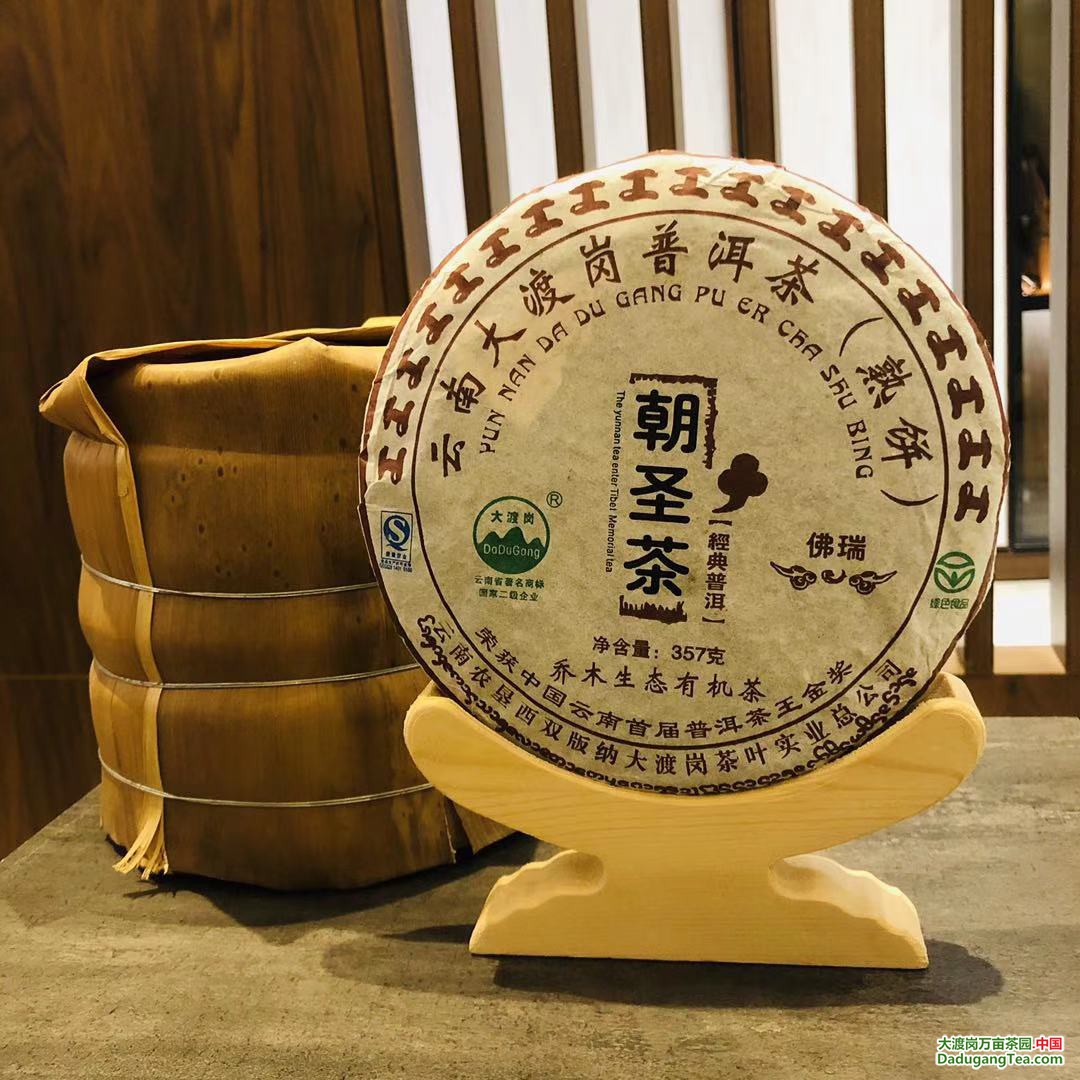
云南大渡岗普洱熟茶朝圣茶是普洱茶中的珍品,产自云南省西双版纳州勐海县大渡岗茶区。
以下将从历史渊源、制作工艺、口感风味、品质特征、收藏价值等维度对其展开详细介绍:
历史渊源
产区历史:大渡岗茶区种茶历史悠久,可追溯至唐朝,茶树资源丰富、品种繁多。此地位于滇西高原,海拔适中,日照充足,土壤肥沃,为普洱茶树的生长提供了理想环境。
名称由来:相传诸葛亮南征时途径此地,被茶叶品质吸引并将茶种带回中原,此后大渡岗茶区的茶叶便被誉为“朝圣茶”,寓意品质崇高。
制作工艺
原料选取:通常选用大渡岗茶区优质的云南大叶种茶青,且多以春茶为原料,此时的茶叶内含物质丰富,为茶叶品质奠定了基础。
发酵工艺:采用传统的渥堆发酵工艺,经过摊凉、杀青、揉捻、晾晒等环节,使茶叶逐渐发酵。发酵过程中,茶叶在微生物的作用下发生一系列复杂的生化反应,形成了普洱熟茶独特的风味和品质。
口感风味
香气浓郁:干茶散发出浓郁的陈香味,冲泡后,陈香更为显著,还可能伴有淡淡的木质香气、花香或果香等,香气持久且富有层次感。
口感醇厚:入口醇厚饱满,口感圆润顺滑,无苦涩之感。茶汤的滋味浓郁,回甘持久,让人回味无穷。
汤色红浓:冲泡后的汤色红浓明亮,犹如琥珀般晶莹剔透,给人视觉上的享受。
品质特征
外形匀整:干茶色泽乌褐油润,条索紧结匀整,芽头肥壮,叶片完整。
耐泡性强:优质的大渡岗普洱熟茶朝圣茶可冲泡多次仍保持较好的口感和香气,一般能冲泡10泡以上。
收藏价值
历史文化价值:承载着普洱茶的发展历程和大渡岗茶区的历史文化,具有较高的历史文化价值。
品质提升价值:在适宜的储存条件下,茶叶会随着时间的推移而不断陈化,品质和口感会逐渐提升,收藏价值也随之增加。
市场稀缺性:由于大渡岗茶区的茶园面积有限,产量相对较少,且优质的朝圣茶更是稀缺,因此在市场上供不应求,价格也相对较高。
品鉴方法
茶具选择:建议使用紫砂壶或盖碗冲泡,以充分展现茶叶的香气和口感。
水温控制:水温以100℃为宜,这样可以更好地激发茶叶的香气和滋味。
冲泡方法:采用温润泡法,即先用沸水冲洗茶叶,然后倒掉洗茶水,再进行正式冲泡。冲泡时间可根据个人口味和茶叶的老嫩程度适当调整,一般第一泡冲泡时间为5-10秒,后续每泡增加5-10秒。
储存方法
干燥通风:储存环境应保持干燥通风,避免潮湿和异味,以防茶叶变质。
常温保存:普洱茶适宜在常温下保存,避免阳光直射和高温,一般储存温度在20-30℃之间为宜。
密封保存:为了防止茶叶吸收空气中的水分和异味,建议将茶叶密封保存,可以使用密封袋或密封罐进行储存。
Yunnan Daduogang Pu'er Ripe Tea, also known as Chaoshengcha, is a treasure among Pu'er teas, originating from the Daduogang tea region in Menghai County, Xishuangbanna Prefecture, Yunnan Province.
The following will provide a detailed introduction from the perspectives of historical origins, production techniques, taste and flavor, quality characteristics, and collectible value:
historical origin
History of the production area: The Daduogang tea-growing area boasts a long history of tea cultivation, dating back to the Tang Dynasty. It is rich in tea tree resources and offers a wide variety of tea varieties. Located on the western Yunnan Plateau, this area has a moderate altitude, abundant sunshine, and fertile soil, providing an ideal environment for the growth of Pu'er tea trees.
Name Origin: According to legend, when Zhuge Liang led his army south, he passed through this place and was captivated by the quality of the tea. He brought the tea seeds back to the Central Plains. Since then, the tea from the Daduogang tea region has been hailed as "Pilgrimage Tea," symbolizing its high quality.
Craftsmanship
Raw material selection: Typically, high-quality Yunnan large-leaf tea leaves from the Daduogang tea region are chosen, with a preference for spring tea as the raw material. At this time, the tea leaves are rich in internal substances, laying the foundation for the quality of the tea.
Fermentation process: The traditional pile-fermentation process is employed, involving steps such as spreading for cooling, fixing, rolling, and airing, to gradually ferment the tea leaves. During the fermentation process, a series of complex biochemical reactions occur in the tea leaves under the action of microorganisms, resulting in the unique flavor and quality of Pu'er ripe tea.
Taste and flavor
Rich aroma: The dried tea emits a strong aged aroma. After brewing, the aged aroma becomes more prominent, and may be accompanied by a subtle woody, floral, or fruity aroma. The aroma is long-lasting and has a rich layered sensation.
Mellow taste: The taste is mellow and full-bodied, with a smooth and round texture, and no bitterness or astringency. The tea soup has a rich flavor and a lingering aftertaste, leaving a memorable impression.
The tea soup is red and rich: After brewing, the tea soup is red, rich, and bright, resembling amber that is crystal clear, providing a visual enjoyment.
Quality characteristics
Uniform shape: The dried tea leaves are dark brown and oily in color, with tightly twisted and uniform strands, plump buds, and intact leaves.
Strong infusion resistance: High-quality Daduangang Pu'er ripe tea, known as the pilgrimage tea, can be brewed multiple times while maintaining a good taste and aroma, typically enduring more than 10 infusions.
Collection value
Historical and cultural value: It carries the development history of Pu'er tea and the historical and cultural heritage of the Daduogang tea region, and possesses significant historical and cultural value.
Quality enhances value: Under suitable storage conditions, tea leaves will continue to age over time, gradually improving in quality and taste, and thus increasing their collectible value.
Market scarcity: Due to the limited tea garden area in the Dadu'gang tea region, the production is relatively small, and high-quality Chaosheng tea is even scarcer. Therefore, it is in short supply in the market and the price is relatively high.
Tasting method
Tea set selection: It is recommended to use a Zisha teapot or a gaiwan for brewing, in order to fully exhibit the aroma and taste of the tea leaves.
Water temperature control: A water temperature of 100℃ is recommended, as it can better enhance the aroma and flavor of the tea leaves.
Brewing method: Use the warm-up method, which involves rinsing the tea leaves with boiling water first, then discarding the rinsing water, and finally proceeding with the official brewing. The brewing time can be adjusted according to personal taste and the age of the tea leaves. Generally, the brewing time for the first infusion is 5-10 seconds, and each subsequent infusion should be increased by 5-10 seconds.
Storage method
Dry and ventilated: The storage environment should be kept dry and ventilated, avoiding moisture and odors to prevent the tea from spoiling.
Storage at room temperature: Pu'er tea is suitable for storage at room temperature, avoiding direct sunlight and high temperatures. The general storage temperature should be between 20-30℃.
Sealed storage: To prevent tea leaves from absorbing moisture and odors from the air, it is recommended to store them in a sealed manner, using sealed bags or cans.
